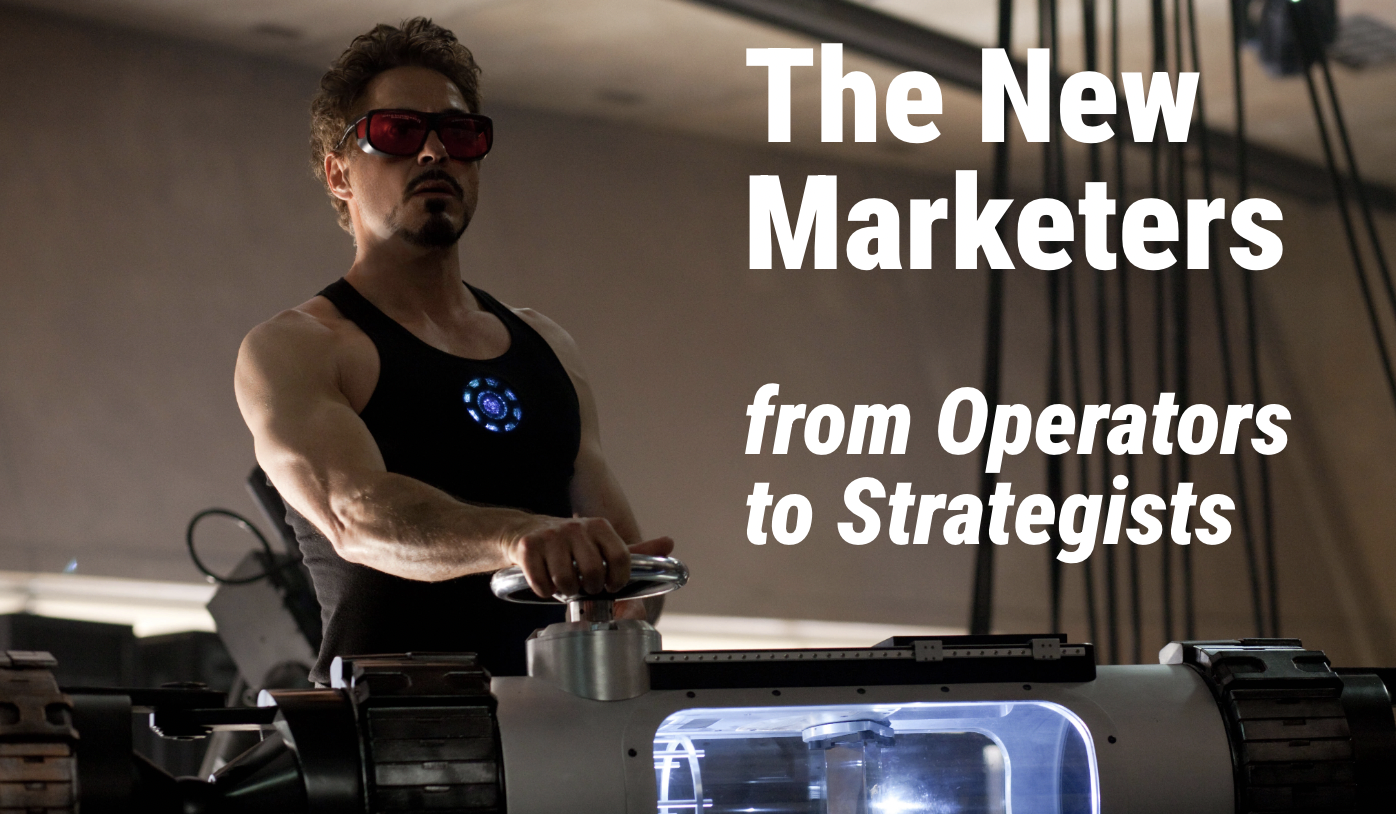Introduction
We’ve been talking about AI’s potential in marketing for years now. Remember when everyone treated AI as some sort of distant innovation, a "someday" technology that we could safely ignore for the time being? Well, that time is gone. Today, AI isn’t a futuristic concept—it’s here, embedded in our daily operations, fundamentally shifting how we approach SEO and SEA.
Let’s be clear: AI in SEO and SEA isn’t new. It has been used for years, but now we’re witnessing it really flex its muscles. In SEO, AI has grown from a helpful tool into a driver that reshapes how we create, optimize, and personalize content for different audiences. In SEA, it’s no longer just automating tedious tasks—it’s making decisions for us, changing how we design, manage, and even conceptualize campaigns. This level of autonomy is both exciting and, if we’re honest, a little destabilizing…
The Evolution of SEO: Battling to Stand Out in the AI Content Flood
To understand where we are now, we need to look back at how SEO has evolved:
The Keyword Era (2000s)
Back in the early 2000s, SEO was all about stuffing keywords into your content. The more keywords you could cram in, the better you’d rank—quality didn’t matter. It was a game of numbers, and everyone played to win, no matter how it degraded the user experience. Google took notice, and, as a result, the search landscape began to shift.
The Content is King Era (2010s)
By the 2010s, Google was pushing for better content with updates like Panda and Hummingbird. Suddenly, SEO became all about providing value, and the mantra “Content is King” took over. We started writing long-form blog posts, creating articles that supposedly added depth and relevance. The reality, though, was a web filled with mountains of mediocre content—many words, little meaning. The intention was to help users, but we often ended up with blog posts that served more to fill quotas than to engage or educate audiences.
The UX and Intent Era (early 2020s)
Then came the focus on User Experience (UX) and search intent. With algorithms like RankBrain and BERT, Google could better understand context and the real meaning behind a search query. It was no longer enough to throw keywords into an article—now, content had to meet the user's needs, be mobile-friendly, and provide value quickly. In this era, content quality remained king, but user experience became the queen.
The AI-Driven Content Era (Now)
Now we’ve entered an era where AI-generated content is everywhere. Tools like Google’s MUM and ChatGPT allow us to create enormous amounts of content instantly. You can generate an entire website’s worth of copy in just minutes. But here’s the problem: AI content is often repetitive and lacks originality. We’re witnessing a flood of low-value, uninspired content cluttering the web, and Google is pushing back again.
With initiatives like E-E-A-T, Google is trying to combat this flood by promoting content that demonstrates experience, expertise, authority, and trustworthiness. If your content is just another AI-driven, recycled piece, good luck trying to rank well. Businesses need to be careful about over-relying on AI for content creation—without a human touch, AI content can become part of the problem, not the solution.
The Role of AIO in SEO: From AI Content to AI Optimization
This is where AIO (AI Optimization) comes into play. Instead of leaving everything to AI, AIO is about guiding AI to understand the brand’s unique tone, purpose, and audience nuances. SEO experts are no longer simply optimizing keywords; they are training AI to produce content that is not just generated, but also enriched with genuine value. With tools like SearchGPT taking center stage, SEO success is shifting—it’s not about bringing everyone to your website, but about attracting the right people who are genuinely interested and ready to engage.
It’s also time for businesses to adjust their metrics. With conversational AI handling more of the search journey, it’s likely that the volume of web traffic will decrease. Gartner even predicts a 25% drop in traditional search volume by 2026. But that’s not necessarily bad—those who do click through will be more engaged and conversion-ready. Businesses should embrace quality over quantity, focusing on high-value interactions rather than just traffic numbers.
SEA: Automation Isn’t Coming—It’s Here
If AI has transformed SEO, it has practically already taken over SEA. We’re at a point where algorithms make many of the day-to-day decisions that used to require a human touch. Let’s face it—the machines are in control of operations. But where do we, as marketers, fit into this automated landscape?
Smart Bidding: Letting AI Set the Rules
Smart Bidding is one of the cornerstones of AI’s influence on SEA. This technology optimizes bids in real time, leveraging millions of signals—such as user behavior, device type, and even local weather. It’s a precision that manual adjustments simply can’t match. But the marketer’s role isn’t gone—we still need to define clear objectives. Are we maximizing conversions? Targeting a specific CPA or ROAS? We set the strategy; the AI handles the granular adjustments.
Responsive Search Ads (RSAs): AI Tests, We Guide
Responsive Search Ads take human creativity and mix it with AI-driven optimization. Marketers provide different versions of headlines and descriptions, and AI then tests combinations to determine what resonates most with different users. It’s powerful, but it’s only as good as the inputs we provide—bland creative will lead to bland results. We need to provide diverse and compelling creative assets for the AI to work its magic effectively.
Performance Max: Cross-Channel, AI-Driven Campaigns
Performance Max campaigns automate cross-channel advertising across all of Google’s inventory—Search, YouTube, Display, Gmail, and more. AI optimizes everything from bidding to ad placement across channels. The human element comes in when we guide the creative direction and set strategic goals, while the AI focuses on how best to execute those campaigns across different touchpoints.
Feeding AI the Right Data: The New Responsibility of Marketers
If AI is going to take care of campaign execution, then marketers are now responsible for feeding AI with the right data—quality data that ensures campaigns are as effective as possible.
First-Party Data: The Backbone of Personalization
First-party data—such as customer purchase history, browsing patterns, and real-time product information like inventory and promotions—is critical for generating ads that feel personal and relevant. It’s what helps AI understand the user and tailor the experience accordingly.
Creative Inputs: Empowering AI with Quality
The more creative inputs you provide, the better the AI can optimize. Marketers need to supply headlines, descriptions, images, and videos in multiple variations. This diversity gives AI room to experiment and adapt, leading to more engaging ads. Localization is also important—tailoring content to specific regions makes a huge difference in ad performance.
Audience Segmentation: Precision in Targeting
Providing well-structured audience segments is key to effective AI-driven advertising. Data such as demographics, on-site behavior, and purchasing intent help AI make smarter decisions about who to target and how.
The New Role of Marketers: Becoming Strategists and Trainers

With AI handling execution, the role of marketers is evolving. We are no longer operators—we are strategists, storytellers, and AI trainers.
1. Strategic Leaders
Our job is to set the big-picture goals—defining KPIs, aligning campaigns with business objectives, and guiding AI tools in a way that makes sense for our broader strategy. AI takes care of the nuts and bolts, but we provide the direction.
2. Storytellers and Creative Visionaries
AI can generate content, but it can’t tell a story or build an emotional connection. This is where human marketers shine. We ensure our brand voice stands out in a sea of automated, generic content.
3. AI Trainers
Marketers need to train AI models, feeding them structured data and teaching them the nuances of our brand and audience. This is crucial for AI to generate relevant and impactful campaigns.
4. Adapting to Platform Shifts
Google is no longer the only dominant player in search. Did you know for example that TikTok is now the most popular Search engine among Gen Z? they are now more likely to use TikTok to find product recommendations or new places than they are to use Google. TikTok’s search functionality is powerful, and it’s a reminder that search is becoming more fragmented. Meanwhile, SearchGPT is also set to change how users seek answers—engaging with them conversationally. As marketers, we need to adapt, ensuring our strategy works across multiple platforms, each with its own unique user behavior.
The Future of Search Marketing: Navigating Uncertainty
We will not pretend to know what the future of AI will be, and experience shows us we’ve been wrong many times. But here’s a few trends we’ve observed that we need to think about.
Conversational Search Will Take Over
Tools like SearchGPT and Google Overviews are making search more interactive. Users will increasingly turn to conversational AI for answers, meaning we must optimize content to be clear, concise, and NLP-friendly—fitting seamlessly into these dialogues.
Visual and Voice Search Will Dominate
Visual and voice search are on the rise, driven by tools like Pinterest & Google Lens and Smart speakers (Alexa, Google home). Content needs to adapt to these formats, making metadata optimization for images and voice-response structuring crucial.
Search Ads will take many forms
Ads won’t just be banners—they will be embedded into AI-driven conversations. Imagine users discussing hiking gear with an AI, and a contextual ad for hiking boots pops up with tailored offers. Ads will become less interruptive and more integrated, presenting products as a natural extension of the user's query. This means that, as a marketer, we’ll need to provide assets of all types (text, image, sounds, videos).
Conclusion
Let’s face it—AI is changing everything about search marketing. It’s reshaping SEO, automating SEA, and forcing us, as marketers, to rethink our entire approach. But here’s the deal: AI won’t replace us—at least not if we don’t let it.
There’s a reason why we still matter. AI is great for doing the grunt work—it’s fast, efficient, and it doesn’t get tired. But AI lacks the spark of creativity, the strategic nuance, and the ability to truly understand human desires. As long as there’s a need for a story, for a real connection, we have the advantage. Our role isn’t just about managing campaigns or cranking out content anymore; it’s about steering the ship, guiding AI to ensure that everything it produces aligns with our brand, resonates with users, and creates something genuinely meaningful.
The future is uncertain—anyone who says otherwise is selling something. Sure, AI will keep evolving, and platforms like SearchGPT or TikTok Search are shaking up the status quo. Could this be the end of Google’s dominance? What is for sure is that we are entering the age of Search fragmentation.
But here’s the twist: these changes are what make our jobs interesting. We’re no longer just marketers; we’re navigators in an evolving digital landscape, using AI as our tool, not our replacement, at least not yet.



